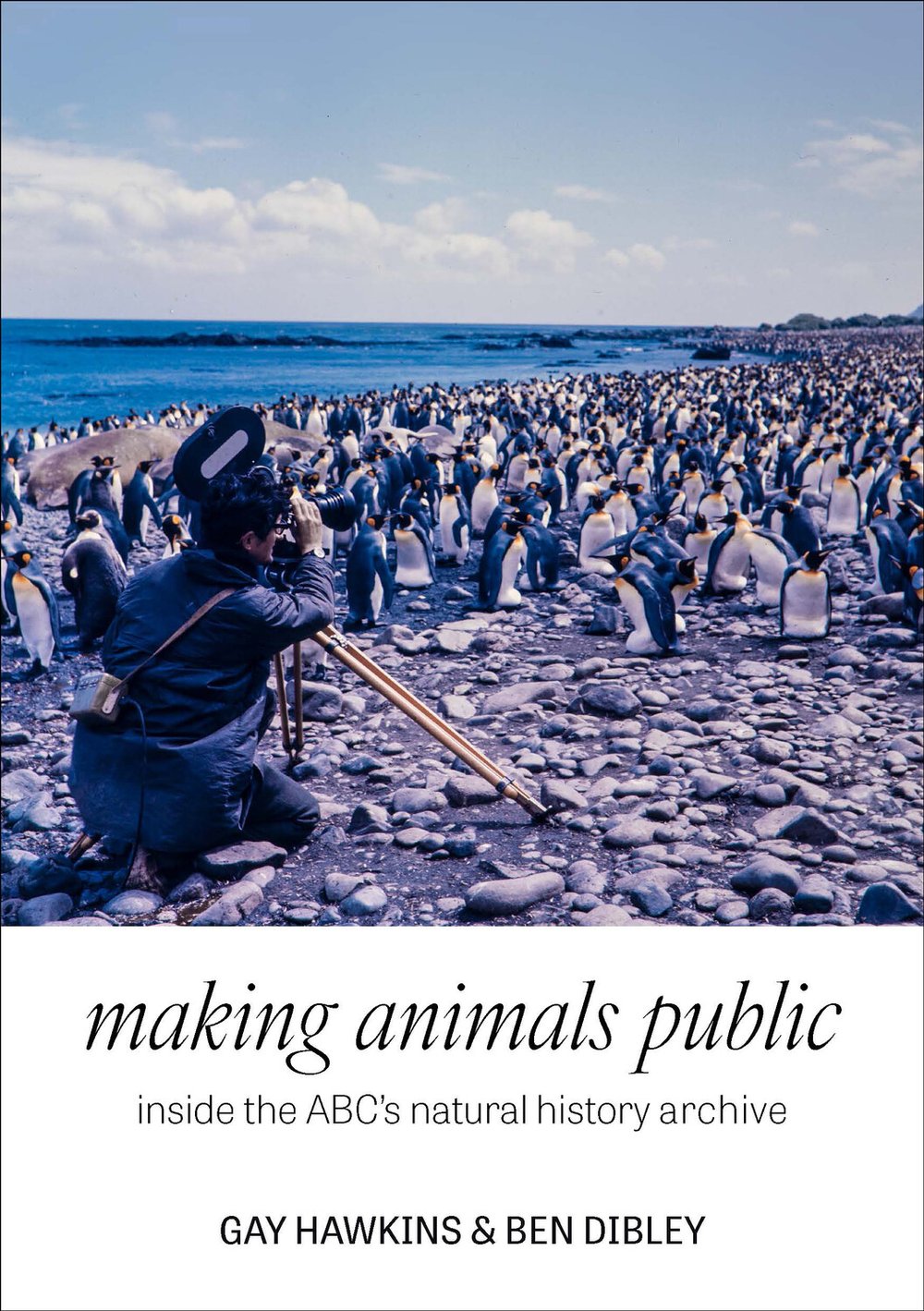Making Animals Public
Inside the ABC’s natural history archive

Natural history television on the ABC has been one of the public broadcaster’s most popular formats. For many viewers, TV has been an important contact zone for engaging with animals they would never encounter in everyday life. These animals have also played a critical role in developing environmental awareness. But how did animals get to be on the small screen and what happened to them when they got there?
Making Animals Public: Inside the ABC’s Natural History Archive traces the cultural and political evolution of the natural history animal on the ABC. It explores different modes of capture from cages to cameras; what has come to count as a natural history animal over time; and the various sites they have inhabited – from nature, to the nation, to the environment, to the planet.
In early natural history programs audiences were invited to watch as sovereign humans there to learn or be entertained by animals that were exotic or aesthetic or scientifically interesting. Whatever the framing, these animals were resolutely other. In recent times, natural history animals have become more assertive. They are now posing uncomfortable questions to human viewers about exploitation, extinction and mutual implication in catastrophic whole earth processes like climate change.
Using a wide range of screen examples ranging from the 1950s to the 2020s, Making Animals Public focuses on shifting cultural and sociotechnical practices in ABC natural history television. Combining science and technology studies, screen studies and critical animal studies, this book develops an innovative interdisciplinary analysis of how televisual animality is crafted and made believable.
Making Animals Public analyses the significant role public television has played in filming and circulating a vast array of animals and habitats that had never been seen before. How these animals were visualised and accounted for has continually evolved. What has remined constant is the fact that natural history television has been a hugely important site for exploring the various politics of human-animal relations – good and bad – and for nurturing environmental awareness in audiences.